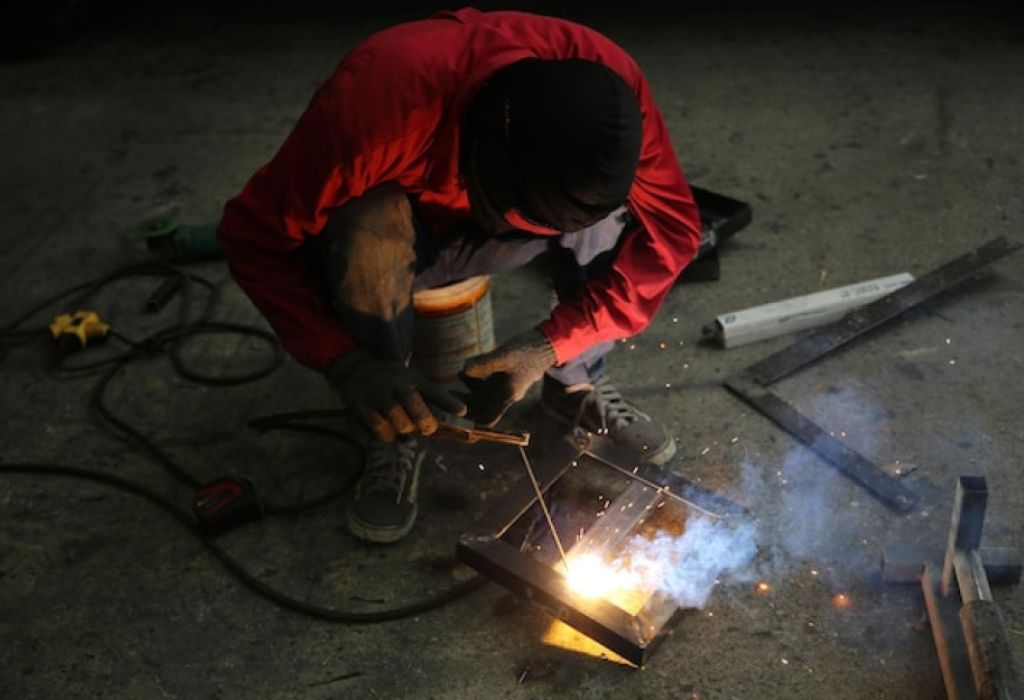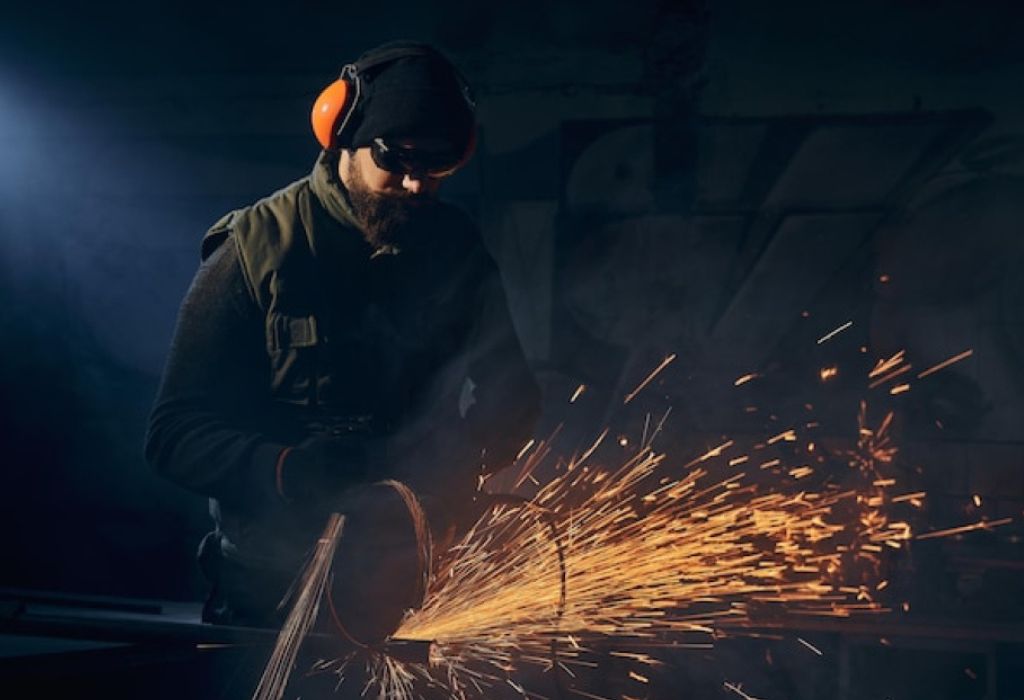A trainee welder lowers a helmet for the first time, sparks burst, and the bead wanders off course. Muscles tense under the heat, and the thought arises: is being a welder hard or just a skill that demands practice?
Welding blends art and precision with physical grit. It requires balancing torch control, filler, and travel speed while shielding eyes from blinding arcs. The environment can be hot, loud, and physically demanding, with long hours standing or crouching over steel. For many beginners, the steep learning curve makes the job feel overwhelming at first.
The data supports this perception. According to the Bureau of Labor Statistics, welders face a 2% job growth outlook through 2034, with around 45,600 openings each year as workers retire or transfer (BLS). Hazards are real too—OSHA lists burns, eye injuries, and fume exposure among the leading risks, but all are preventable with proper training and personal protective equipment (OSHA).
Despite the challenges, welding offers rewards that keep people in the trade. The ability to join metals for construction, shipbuilding, or pipelines provides both steady employment and the satisfaction of building structures that last decades. Median wages for welders hover around $51,000 annually, with opportunities for much higher pay in specialized or hazardous environments.
This guide explores the real difficulties of welding—from learning curves and physical strain to safety requirements—and how each challenge can be managed. By the end, you’ll see why welding is demanding yet achievable, and why many choose it as a lifelong career.
Quick Answer — Is Being a Welder Hard?

Welding is challenging at the beginning because it demands coordination, heat control, and safety awareness. Over time, difficulty decreases with proper training and repetition.
Some processes are more complex than others. MIG welding is the easiest entry point, Stick welding is versatile but tricky, and TIG welding is widely considered the hardest due to multi-limb coordination.
Is the learning curve steep?
Yes, but it levels off after consistent practice.
Which welding process is hardest for beginners?
TIG, because it requires torch, filler, and foot pedal control at once.
Is welding physically demanding?
Yes, the work often involves heavy lifting, awkward positions, and exposure to heat.
Is safety a major concern?
Yes, but proper PPE and training minimize risks.
Does pay offset the difficulty?
Often, with a median income of $51,000 and higher potential in specialized fields.
What Makes Welding Hard (and What Makes It Easier)
Skill Stack — Hand-Eye Coordination, Heat Control, Travel Speed
Welding requires managing the puddle, filler material, and torch angle at the same time. Beginners often struggle to maintain consistency until muscle memory develops.
Is MIG easier than TIG?
Yes, MIG is often recommended for beginners due to its push-button simplicity.
Does material affect difficulty?
Yes, thin aluminum or stainless steel is harder than mild steel.
Can wrong settings cause issues?
Yes, incorrect voltage or amps can ruin weld quality.
Physical Demands & Environments
Welders work standing, kneeling, or overhead, often in hot or confined spaces. Field welders may also face outdoor weather.
Is shop welding easier than field welding?
Yes, controlled environments reduce fatigue and risk.
Do ergonomics matter?
Yes, positioning can greatly reduce strain and mistakes.
Does physical fitness help?
Yes, strength and mobility support long shifts.
Safety, Fumes, and Burns
OSHA lists burns, shock, UV radiation, and fumes among top hazards. PPE and ventilation systems make these risks manageable.
Are injuries common?
They can be, but safety culture and PPE reduce incidents.
Is eye protection enough?
Yes, but only with the correct shade lens and side shields.
Do fume extractors help?
Yes, especially when welding stainless or galvanized steel.
Learning Path — How Hard Is It to Get Competent?
Timeframes (School, Bootcamps, Apprenticeship)
Basic welding skills can be learned in weeks, but becoming job-ready usually requires 6–12 months of training. Apprenticeships deepen field experience.
How long to reach hobby-level competence?
A few weeks with consistent practice.
How long to become employable?
Typically several months in a structured program.
Is apprenticeship required?
Not always, but it accelerates learning.
Certifications & Tests (AWS, WPS, Procedure)
Certification is performance-based. The AWS Certified Welder test requires welders to meet specifications under a welding procedure.
Is certification mandatory?
Depends on employer or project requirements.
Do certifications vary?
Yes, based on welding process, position, and material.
Does certification expire?
Yes, continuity documentation is often needed.
Which Welding Processes Feel “Hard” (And Why)

MIG/GMAW — The Starter
MIG is beginner-friendly and suited for mild steel. It is fast and efficient but creates spatter.
Is MIG easiest to learn?
Yes, most training programs start with MIG.
What’s the downside?
Less control over bead appearance.
Does shielding gas matter?
Yes, incorrect gas weakens welds.
Stick/SMAW — The Versatile Field Hand
Stick works well outdoors and on dirty steel, but requires arc control and slag management.
Is Stick harder than MIG?
Yes, because arc length and rod handling are manual.
Why is Stick important?
It’s versatile for repairs and field work.
Is vertical welding difficult?
Yes, gravity increases the challenge.
TIG/GTAW — The Surgeon
TIG offers clean, precise welds but demands coordination and patience. It is used for stainless, aluminum, and exotic metals.
Is TIG the hardest process?
Yes, for most welders.
What’s the payoff?
High-quality welds and higher pay.
Can beginners start with TIG?
Yes, but it takes longer to master.
Career Reality — Pay, Demand, Mobility
Welding offers consistent opportunities. Median pay is about $51,000 per year, but specialized jobs like pipeline or underwater welding pay much more.
Is being a welder hard to get into?
No, especially with certification and a portfolio of test welds.
Do specialized welders earn more?
Yes, fields like aerospace and pipe welding pay above average.
Is travel common?
Yes, in industries like pipelines, shipyards, and construction.
Can welders move into inspection?
Yes, many become Certified Welding Inspectors (CWI).
Safety & Health — Making Hard Work Safer
PPE & Controls
Essential PPE includes helmets, FR clothing, leather gloves, boots, and ventilation. OSHA emphasizes hazard control as a safety priority.
Do most injuries involve burns and eyes?
Yes, but PPE reduces the risks.
Is hearing protection needed?
Yes, especially in fabrication shops.
Do welders need respirators?
Yes, when working with stainless, aluminum, or galvanized metals.
Training & Safety Culture
Shops with strong safety cultures lower accident rates. Daily inspections and hot-work permits reduce risks.
Do safety checklists help?
Yes, they prevent common mistakes.
Are TIG gloves different?
Yes, they’re thinner for dexterity.
Does fatigue cause mistakes?
Yes, rest and rotation lower risk.
How to Make Welding Easier (Actionable Playbook)

Setup & Fit-Up
Clean materials, correct gaps, and solid tacks make welding easier. Parameters must match materials.
Does cleaning matter?
Yes, clean joints produce stronger welds.
Are tack welds important?
Yes, they prevent distortion.
Do fixtures help beginners?
Yes, they increase consistency.
Practice Plan
Training should progress from flat welds to overhead positions. Recording settings and results speeds improvement.
How much should beginners practice daily?
Short, regular sessions are best.
Should beginners aim for certification early?
Focus on fundamentals first, then test prep.
Is a portfolio useful?
Yes, test plates impress employers.
FAQs Beginners Ask
Is being a welder hard without school?
Yes, but mentors and structured practice can help.
What’s the fastest way to land a job?
Train in one process, earn an AWS test, and build a portfolio.
Do welders need math skills?
Yes, blueprint reading and measuring are essential.
Is underwater welding required for high pay?
No, code pipe welding and aerospace also pay well.
Will robots replace welders?
No, automation still needs skilled operators.
Conclusion
So, is being a welder hard? Yes, at first—it’s physically demanding, requires coordination, and carries safety risks. But with structured training, protective gear, and steady practice, the challenge becomes manageable.
The trade offers consistent openings, competitive pay, and opportunities to specialize in high-paying fields. From basic MIG to precision TIG, welding provides both stability and mobility.
Final advice: Start with one process, practice consistently, invest in PPE, and target AWS certification. With dedication, welding shifts from “hard” to rewarding—a career built on skill, safety, and steel.

I’m Darrell Julian, the founder, lead writer, and hands-on welding enthusiast behind ArcWeldingPro.com. With more than 15 years of real-world welding experience, I created this platform to share what I’ve learned in the field, in the shop, and in the heat of the arc.


